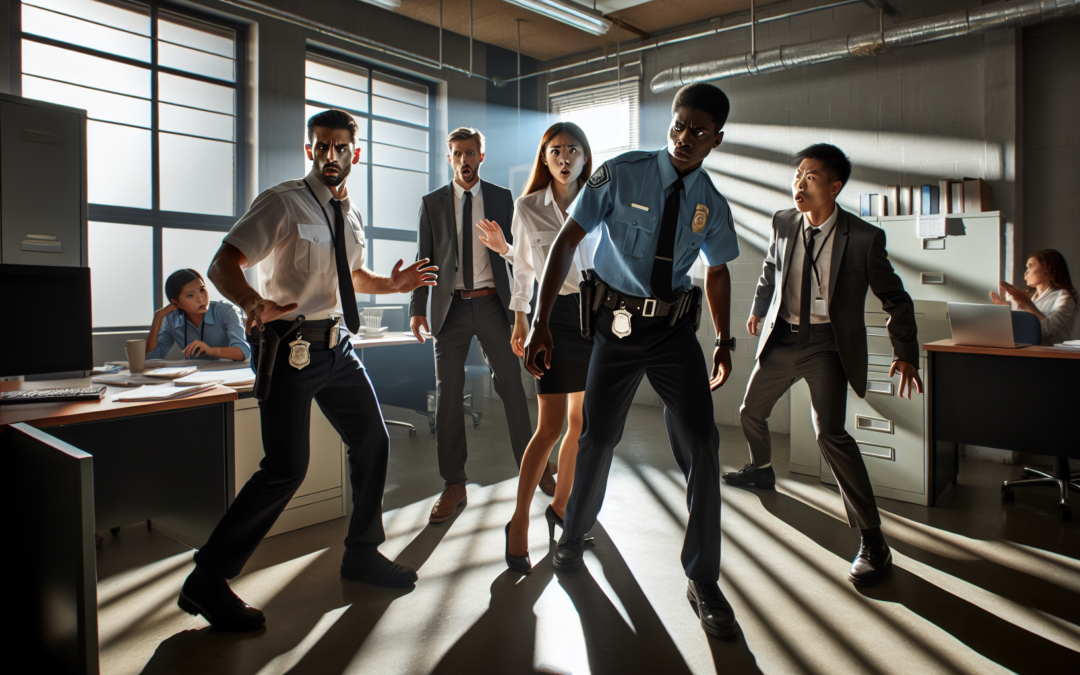Guardians in the Midst of a Fraught Underworld
In the frequently misunderstood sciences of legitimacy and law, security officers face an evolving landscape where they daily traverse the muddy waters of public perception, striving to keep their oath of protection and order. Amidst a growing culture of skepticism, which reaches its zenith within the contentious sphere of public audits, they stand as beacons of resilience and fortitude. These professionals are not mired in the allure of glory or personal ambition; instead, they are anchored by a profound commitment to safeguard a system that serves the people.
A Day in the Life on the Line
It’s within the mundane details of their daily toil that one discovers the silent heroism of these officers. Imagine stepping into the shoes of a security officer, readying oneself for another challenging day where interactions with increasingly adversarial personalities—sometimes self-styled “frauditors”—are not just likely, but inevitable. At each public building, each checkpoint stands an edifice of uncelebrated sacrifices where officers thwart not just physical intrusions, but assaults on integrity, transparency, and trust.
Operating on the razor’s edge, these men and women manage the intricate balance between enforcing rightful accountability and maintaining decorum. In the complex choreography of keeping public order, they must carefully read each interaction, often making split-second decisions that, when overanalyzed in a digital mob space, could unfurl fast and ruinously. They are the silent sentinels fending off disorder through their watchful gaze and steady hand.
The Sensitive Dynamics of Public Interactions
The canvass of a security officer’s work is a mosaic of intensely charged, unpredictable human emotion. Each day greets them with the saturation of tension that only escalates with the seething presence of a camera probing into every calculated movement and errant remark. Public audits, seemingly a channel for citizen engagement and transparency, often complicate this matrix.
These face-offs are harrowing, beyond visual comprehension. Smiling in the face of scorn, responding firmly to provocations designed to trip their defense, and emerging unflustered in repeated rounds of skeptically video-documented confrontations requires much more than professional aptitude—it demands compassion, self-control, and a strong sense of personal duty.
Watch more here to delve into a sample of these moments tested in the crucible of nerve and skill.
Navigating the Dense Forest of Public Perception
However, the real struggle goes beyond the physical realm, breeding roots in the perception battle fought in public imagination, heavily influenced by social media and digital content platforms. As consequences of actions—and inactions alike—swirl rapidly through cyberspace, how the role of these officers is perceived may shape trust in legal and audit systems themselves.
Unjust narratives are quick to circulate, and a single misstep or misconstrued gesture is enough to distort forever an officer’s earnest intention. Their story doesn’t always get the headlines—it is rarely “sexy” to recount a day when meetings proceeded without incident, when safety protocols were perfectly adhered to, missing the entire philosophy of preventive law enforcement practice.
It’s a somber recognition that societal trust in structured law processes hangs in a delicate balance with every engagement. Yet numerous stories illuminate the path of righteousness—vignettes of courage where every confrontation deftly managed builds a stronger rapport with the public they serve.
Building Triumphant Counter-Narratives
Officers face a proactive future where narrative-building needs just as much expertise and agility as offense-definitive skills. They aim to be more than distant enforcers—they hope to personalize how institutions are viewed and deliver their professions not just as jobs but chosen vocations of civic duty.
Join the ever-vigilant community dedicated to shedding light on overlooked stories, forging bridges for nuanced understanding of public service and dedication.
It bears witness to how every documented incident is another brick laid in fortifying bridges to democracy and a celebration of laws and systems that fight against chaos in pursuit of a confident, ethically engaged country.
Moving Towards a Vision of Trust and Justice
The daunting picture isn’t without its streaks of hope. Law enforcement units, alongside advisory panels, and civic forums form alliances, creating workshops and forums that unveil transparency in processes, educate the public on rights and limitations, and humanize the role security personnel occupy in this evolving domain.
Subsequent iterations of these exchanges will, though challenged, continue, aiming not only to clarify perceptions but to clearly chart the enduring bond between enforcer and citizen built on mutual respect and accountability.
Security officers may reel nothing in by reclaiming protection’s unwavering optimism as they wrest nothing less in fighting apart skepticism’s barriers to meaningful engagement. It is testament enough of their unwavering belief in justice’s beauty and the comforting embrace of lawful existence.
Above all, these officers, as tenacious instruments of safety and principle, stand tall as a living memorandum of the virtue-filled skirmish that justice alludes to its obedient custodians. They smile in the face of foresight and defy villainy’s call to erode sworn duties; resolute in their perseverance, they carry forth they ethic to administrate arms and transparency stalwartly.
For insights and contributions to this narrative, the community hub persists at the following link where the essence of discourse enacts prosperity to shared understanding.

Recent Comments